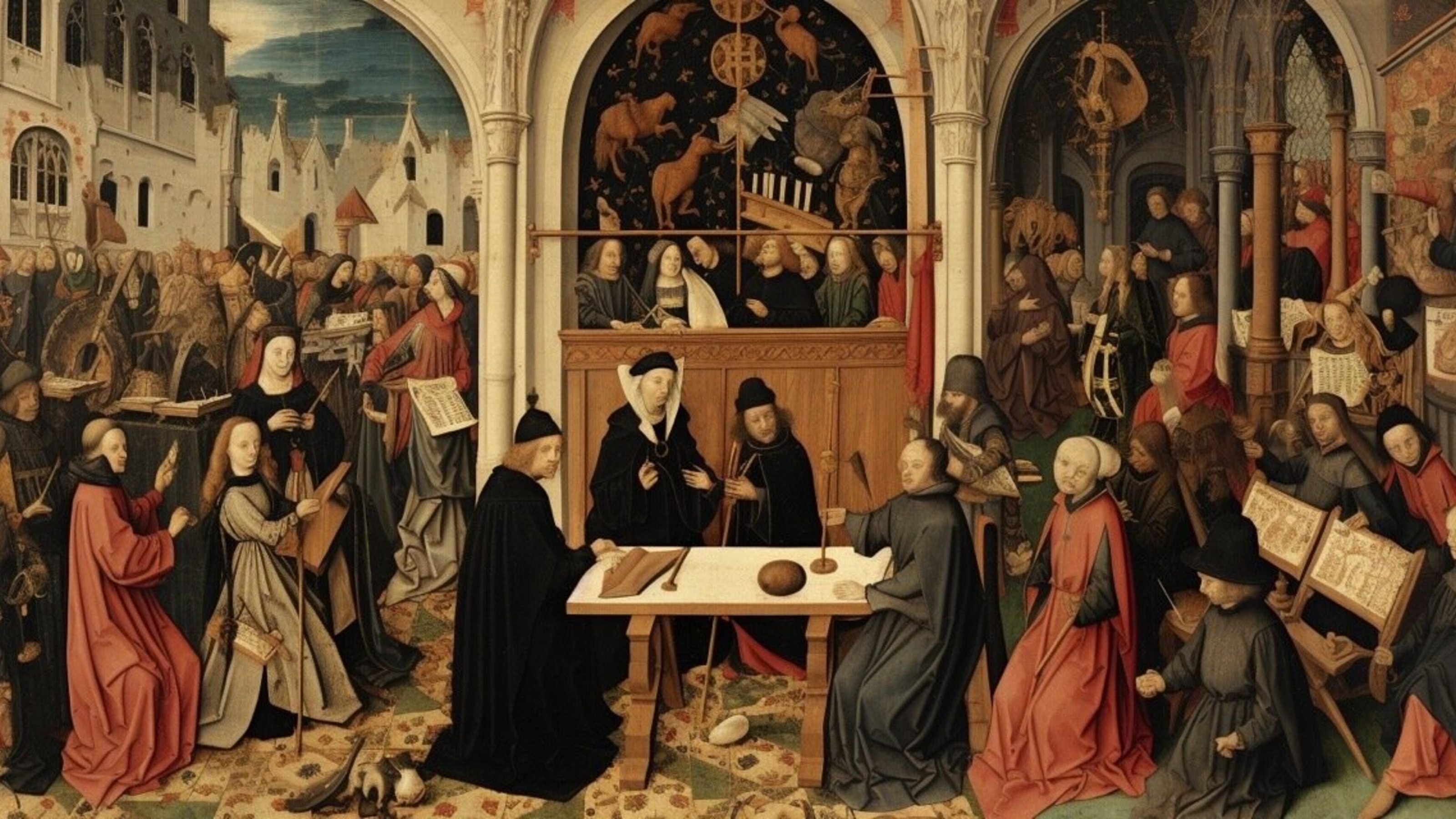Trading platforms such as CAST have been proving their worth for centuries. The Romans, for example, knew collegia. These were associations with members who shared the same profession and whose goal was to gain common advantage. Probably the most appealing to the imagination are the medieval guilds. In almost every city in the Netherlands, professionals were united in a guild for centuries until Louis Napoleon put a definitive end to the guilds in 1808.
United in Craft: CAST vs. Medieval Guilds
The genesis of guilds is closely linked to the rise of cities in the Middle Ages. For merchants and craftsmen, living in a city was attractive because weekly and annual fairs were held. A guild can be described as a group of craftsmen who, with the permission of a government (city, lord or kingdom), regulate the exercise of a craft with respect to producer, consumer and general welfare. Besides the business side, guilds also provided a kind of collective insurance, through which guild brothers and their families could count on support in case of illness or after the death of the guild member.
Competition outside the city walls
Within the city walls, craftsmen were required to join the guild that governed that craft. The guilds regulated trade within the city walls and thus kept competition out. The quality of the products was monitored, and if the rules were violated, a guild member could be fined or expelled. Guild members were thus largely protected from competition from outside their own city walls, allowing them to sell their products for good prices. The guilds themselves generated income from entrance fees but fines imposed on guild members for breaking guild rules brought in money.
Knowledge and craftsmanship
An important function of the guilds was to ensure knowledge and craftsmanship. For example, if one wanted to learn a particular craft, one had to be apprenticed by a master who was a member of the respective guild. The master was obliged to teach his apprentice everything he himself mastered. After a few years, if the student had made sufficient progress, he could become a journeyman and join the guild. After several more years of working for the master, passing a master's exam and paying an entrance fee, the new craftsman could work as a master himself. Women were rarely admitted to the guild, with few exceptions, and certainly never became masters.
Crispinus and Crispinianus
Guilds also took care of the welfare of members and their families. For example, they could claim an allowance in case of illness or financial assistance for the family of a deceased guild member. This was an important aspect because there was no social safety net from the authorities. Thus, when one was unable to work, one often had to beg to support oneself.
In the Middle Ages, religion played a hefty role in everyday life and thus also in that of the guilds. Each guild had its own patron saint to whom an altar was established in one of the city's churches. For tanners, shoe and boot makers, we even know of two patron saints: Saint Crispinus and Saint Crispinian. The name day of these saints is still commemorated on Oct. 25.
Lack of innovation; the death sentence for the guild system
Guilds had enormous social, and often political, influence beyond the members of the guild. Rules were strict and remained unchanged for centuries. Price agreements, for example, applied to every guild member and could only be adjusted collectively. Farmers and craftsmen from outlying areas who tried to supplement their meager wages with cheaper, home-made shoes and leather goods were only welcome at the weekly and annual fairs organized within the city walls. While this protected the competitive position of the guild brothers and the quality of their products, it also left little room for innovation. And the latter proved to be the trigger for the definitive end of the guild system after hundreds of years.
Quality, teamwork and innovation as keywords
In short: looking back, we can conclude that CAST anno 2024 still upholds many of the norms and values of the medieval guilds. CAST is committed to knowledge, education and craftsmanship. As a trade association, CAST brings member companies and their customers together in one building, and quality is paramount. On the other hand, the Trade Platform for Shoes, Sports and Fashion does see the great importance of innovation. Together with the interests of affiliates and joining forces is the key word in the present and for the future of CAST.
About the author:
Inge Specht worked for over 25 years as curator and museum coordinator at the former Nederlands Leder en Schoenen Museum, now Schoenenkwartier. In mid-2023, she founded Valuation and Advisory Office Waardevol d'Ing. In addition to historic shoes, bags and leather goods, she values corporate collections, writes, advises on passive preservation and restores and sells vintage products.
United in Craft: CAST vs. Medieval Guilds
At the beginning of this new buying season, CAST likes to take a moment to reflect on the importance of our trading platform to you as visitor and exhibitor. The explosive growth that CAST is currently experiencing is undeniable proof of the value that the platform represents for the industry. Joining forces, expanding networks and the resulting mutual collaborations also contribute to the visibility of your brand and collections. As the new shoe buying season begins, the next few weeks Inge Specht of Valuation & Consultancy Value d'Ing will take you through the past, present and future of industry organizations in general and CAST in particular.




